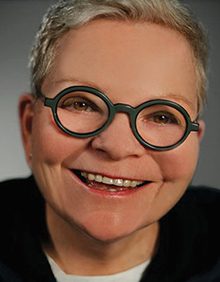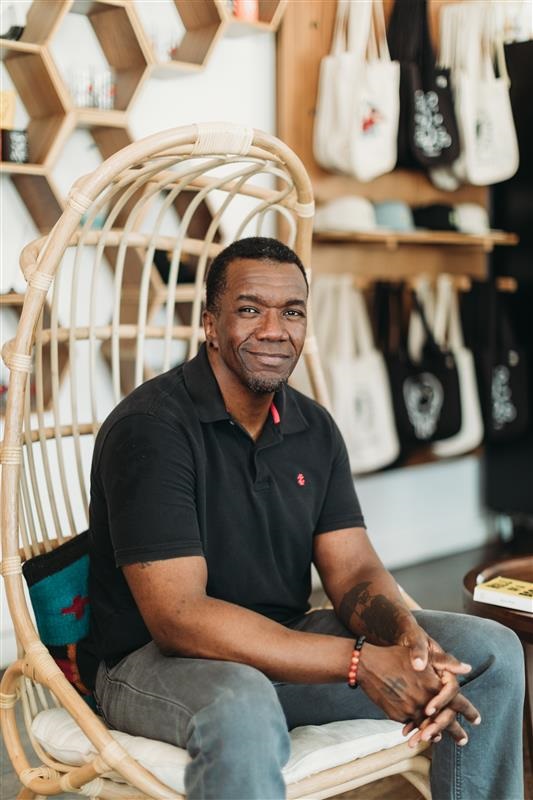Like many of us, as a child I longed for stories. And long before I trained myself to read or had the attention span for movies, I demanded stories from my father. Each of his stories started identically, an amalgam of folk tale and Star Wars intro: “once upon a time in a far-away place, but not too far-away.”
It was this faraway-but-not-too-far-away which made the story compelling. Anything could happen in a faraway place, and anything could be brought here from a place that’s not too far away.
From the outset of Celeste Gainey’s The Gaffer, we know we’ve entered into the faraway-but-not-too-far-away, a place both fantastic and luminous, where strange and amazing things can happen and might even be brought back. The first poem in the collection is entitled “once upon a time on all hallow’s eve in gotham city,” a move that at once puts us in a place that’s magical and cinematic– all hallow’s eve, Gotham city– and familiar, for nobody can read Gotham without thinking New York.
The poem begins with all the eerie banality of spectacle you could hope for from the title:
A Weegee full moon
exposes the Dada
black cat and Quasimodo
The characters “promenade/ down/ 5th Avenue” and our vision is drawn to another corner, where a hilariously, fantastically banal Idaho potato is trying to catch a cab. The imagery is sparse, the mood both lively and elegiac. The point of view provides no commentary, only illumination.
Which is to be expected from a poet who’s had a lengthy career literally shining lights on to things. Celeste Gainey was also the first woman to be admitted as a gaffer (chief electrician) to the International Alliance of Theatrical Stage Employees, in 1974, and has had a successful multi-decade career as an architectural lighting designer.
Which, come to think of it, is not a bad descriptor of her role as poet. The Gaffer is focused through electricity and light– the best light, as per advice given to the narrator in one of the early poems of the book, “i light lucy”:
Always make up
in the best light,
Lucy tells me,
then demand
the same for your closeup.
And yes, she’s talking about Lucille Ball, the Lucy we’d all like to get advice from, if only, like our narrator, we had “the balls to know what she wants:” a jargon-y list of lights under our narrator’s erotic direction.
Lucille Ball’s not the only famous name to show up in the book, either, as Gainey worked on many of the (still) well-loved movies of yesteryear. The sets of Taxi Driver, The Wiz, Hairspray, and Dog Day Afternoon all make appearances in The Gaffer. But more than movie production and performance on the silver screen, this is a book of poems that celebrates the performance of being. All the characters in the book– narrator, Idaho Potato, long-dead mother, Robert DeNiro– are complicit in this performance. They appear almost in freeze frame, a posed pause in the action, aware of being watched even while alone.
One of the primary performances of being, Gainey seems to be saying throughout this collection, is our performance of gender. Gender functions as decision, intention, and accoutrement in The Gaffer, made most clear in the poem “best boy,” where Gainey writes
[a]t the age of three
I tell my mother:
When I grow up, I’m going to be a man.
On its face, this is a sad declaration; we’re conditioned to see such statements as impossible goals. However, this pathos is tempered by our foreknowledge that the speaker does get to become a man, or at least a best boy.
But such foreknowledge on our part and doesn’t make the lived experience of the speaker any easier. The cocksure toddler must grow up, deal with gossips of adolescence:
Eighth grade, girls talk:
Who will get married? Make a good mother?
Not one can see me as a wife with kids.
It hurts a little to hear I’m not like them.
And then finally, toward the end of the poem, the narrator finds the transformative, performative home she’s been looking for: Local 52, where she pleads to become a “Best boy– apprentice,” to a whole host of gaffers, made iconic through their naming, guides to a moment of techy transcendence:
set their spider-boxes, haul their 4-aught,
flag their barn doors, trim their brute arcs,
run their stingers, scrim their broads,
wrap their 9-light fays;
let them make me a man.
Or the moment described a few poems later, in “rush 501,” when the narrator buys her first pair of men’s Levi’s in a vintage clothing store in St. Mark’s,
a slight cumulus cleft to the left
of the crotch, where he had stashed his bulge.
Putting them on was weird, a crazy rush;
like trying on the groove of a missing person,
something right and wrong at the same time–
an instant sex change operation.
which is the same feeling her mother gets when our narrator returns, wearing the jeans, which is possibly the feeling that all the best performances give: “something right and wrong at the same time.”
 “rush 501” is also an excellent example of the importance of, and the lush detail given to, fashion. Early in the book, in the poem “before talkies,” our attention is focused on a handkerchief, surreptitious marker of love, placed to “look snappy/ against the imported alpaca/ of my sport jacket.” Later, in “i always wanted a bird :”, a list poem which hits a perfectly poignant mix of pitches, desires like “a sombrero, cowboy boots, and button-up jeans,” “the ochre dress with stripes going the wrong way,” “white buck saddle shoes,” and to “wear a tie & waistcoat” are mixed with, and generally lead way to, more serious wishes, such as “my father to stop drinking,” “to love someone as much as my mother,” and “die sooner rather than later.” The poem ends with the line “I always wanted a canary in a round silver cage, singing,” an image which seems both luminously beautiful and fantastically dark. Even the most beautiful performance- one sung by a canary in a fancy venue (for canaries, at least)- is taking place behind bars, caged.
“rush 501” is also an excellent example of the importance of, and the lush detail given to, fashion. Early in the book, in the poem “before talkies,” our attention is focused on a handkerchief, surreptitious marker of love, placed to “look snappy/ against the imported alpaca/ of my sport jacket.” Later, in “i always wanted a bird :”, a list poem which hits a perfectly poignant mix of pitches, desires like “a sombrero, cowboy boots, and button-up jeans,” “the ochre dress with stripes going the wrong way,” “white buck saddle shoes,” and to “wear a tie & waistcoat” are mixed with, and generally lead way to, more serious wishes, such as “my father to stop drinking,” “to love someone as much as my mother,” and “die sooner rather than later.” The poem ends with the line “I always wanted a canary in a round silver cage, singing,” an image which seems both luminously beautiful and fantastically dark. Even the most beautiful performance- one sung by a canary in a fancy venue (for canaries, at least)- is taking place behind bars, caged.
In another poem, “the 70’s:”, Gainey details a particularly badass ensemble as stand-in for the entire decade. Like much of the book, this poem is both aggressive and wounded. It recalls “the age of innocence,” and the feeling that “history is ours for the making” for the queer community, two sentiments that would be thoroughly shaken in the 80s with the AIDS epidemic.
The straddling of these two tonal positions- aggressive and wounded- is done masterfully in this collection, and mirrors the two mediums the gaffer has to work with: light and dark. A good performance requires both. And The Gaffer provides us with both: a sense of danger and a sense of magic, a sense of realness and performity, the brute arc and the black shadow of its absence.





One response
Such a perceptive and complete review, itself exquisitely considered.
Click here to subscribe today and leave your comment.